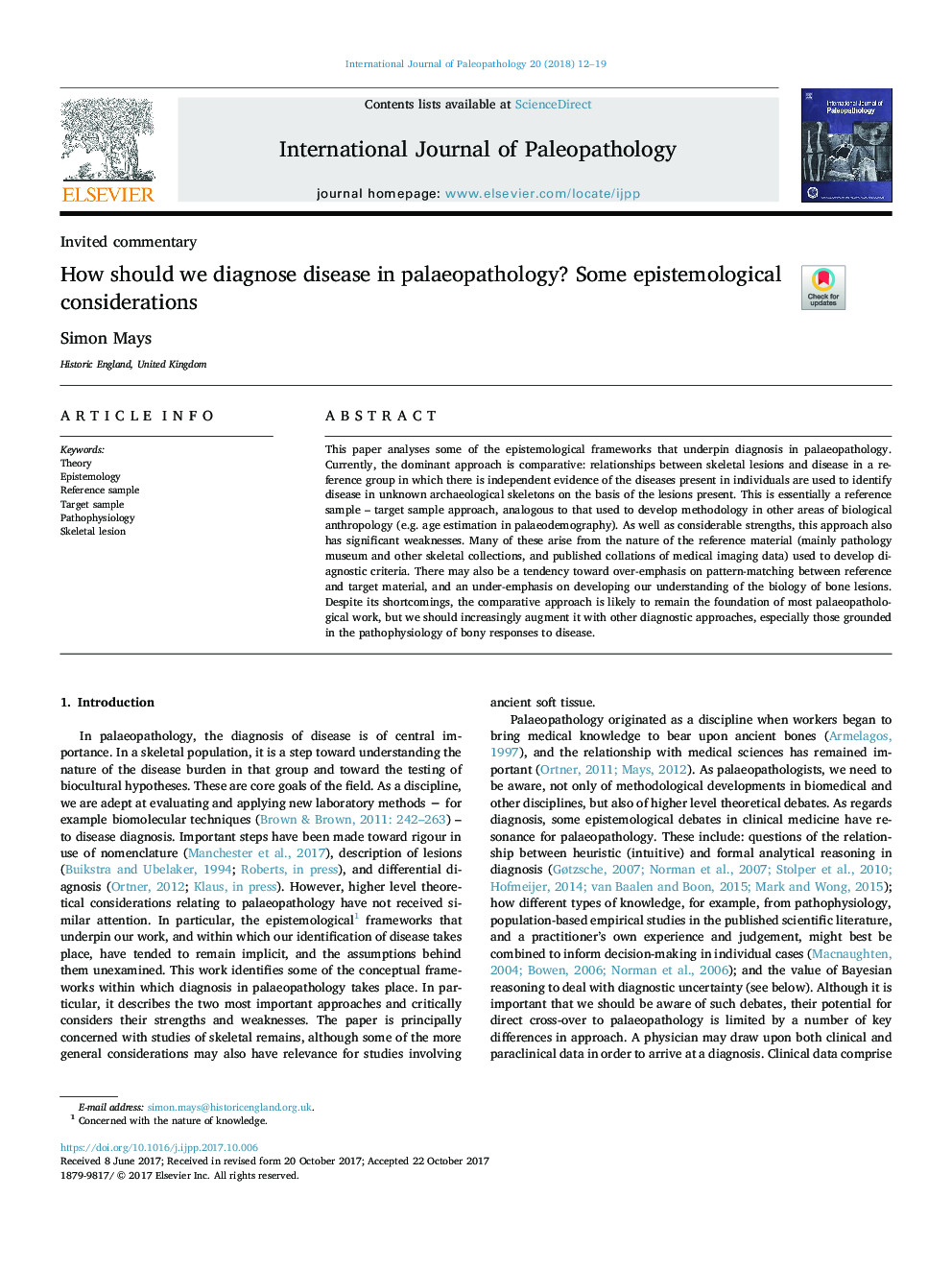| Article ID | Journal | Published Year | Pages | File Type |
|---|---|---|---|---|
| 6554776 | International Journal of Paleopathology | 2018 | 8 Pages |
Abstract
This paper analyses some of the epistemological frameworks that underpin diagnosis in palaeopathology. Currently, the dominant approach is comparative: relationships between skeletal lesions and disease in a reference group in which there is independent evidence of the diseases present in individuals are used to identify disease in unknown archaeological skeletons on the basis of the lesions present. This is essentially a reference sample - target sample approach, analogous to that used to develop methodology in other areas of biological anthropology (e.g. age estimation in palaeodemography). As well as considerable strengths, this approach also has significant weaknesses. Many of these arise from the nature of the reference material (mainly pathology museum and other skeletal collections, and published collations of medical imaging data) used to develop diagnostic criteria. There may also be a tendency toward over-emphasis on pattern-matching between reference and target material, and an under-emphasis on developing our understanding of the biology of bone lesions. Despite its shortcomings, the comparative approach is likely to remain the foundation of most palaeopathological work, but we should increasingly augment it with other diagnostic approaches, especially those grounded in the pathophysiology of bony responses to disease.
Related Topics
Life Sciences
Biochemistry, Genetics and Molecular Biology
Physiology
Authors
Simon Mays,
